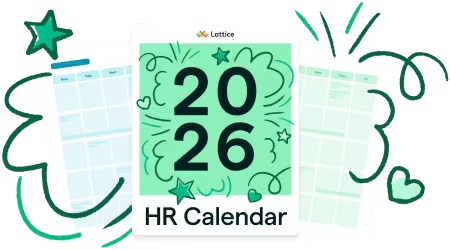Foster Made wanted to nurture growth while staying true to its values as a people-focused agency. With Lattice, they created a system for open feedback and development that reinforced trust and kept the team aligned.
Lattice is great for us because we haven’t grown to the size where we have an HR department but we know that we need to be doing these things for culture and growth and employee happiness.

Challenge
Shawn Maida remembers how easy it used to be to stay up to date with his team in the early days. “When were smaller, I did lunches with the individual team members as check-ins. We never had a software platform to do that.”
Ad hoc lunch check-ins worked with a small team but Shawn acknowledges that it’s a process that breaks down as you add more people and ever-increasing amounts of client work. “As we grew, we kind of stopped doing check-ins. It’s almost like we ran out of time.”
Over 85% of Foster Made’s workforce is made up of software developers or product people with the rest dedicated to business and client services. Shawn didn’t have someone dedicated to human resources but he knew that his team could benefit from having a performance management platform like Lattice.
“If you think about companies our size, especially in the creative industries, all of the owners were the workers originally. We see the value in doing performance management but we don’t have the infrastructure, so Lattice is great for us because we haven’t grown to the size where we have an HR department but we know that we need to be doing these things for culture and growth and employee happiness.”
“I was really excited about Lattice because I thought it was something the staff needed. As an owner, I needed that touchpoint too.”
Phased Implementation
The Lattice platform includes a full suite of continuous performance management features including goals, weekly updates, feedback, 1:1 meetings, and performance reviews. Shawn used the built-in settings to customize the platform and launch each core feature separately.
The team started with weekly updates. “We eat lunch as a team every Monday. We just rolled it out on a Monday, saying ‘We’re doing check-in updates.’ We just went all in. We were at 20 or 21 people at the time, so we just went in with everybody.”
“We’re a web development company and things just move so fast in an agency. People give an update of what they’re working on next week and talk about their projects. I can jump in to provide guidance. It doesn’t replace a standup [meeting] but it’s like a different vehicle for information. They don’t have to tell you in person. They can just write it and it’s safer somehow.”
“The one-to-five employee sentiment score is really interesting to me because seeing the trends has been helpful. The individual scores aren’t all that meaningful but you notice it when someone that usually puts in a “3” puts in a “2” or if a person that usually does a “4” puts in a “3.” You notice the variation in your people and that causes conversation. That’s been very helpful.”
“We rolled out praise next because it was an easy and necessary win with the team. Lattice’s public praise system combined with the Slack integration is an invaluable culture-building feature with very little implementation overhead."
"The platform encourages the entire team to create and contribute to a culture around giving praise and recognition.”
Shawn’s team has also just started rolling out quarterly reviews and 1:1s.
How to Launch Weekly Updates
Foster Made’s team posts more weekly updates per employee than 95% of other Lattice customers that are using the updates feature. Here’s how they did it.
The first hurdle to adoption is to get employees to write that first update. The tool is simple to use but Shawn explains that some employees need guidance for what to write in that initial update.
He’s observed that “people just don’t know what they’re supposed to write at first.” Managers should be there to talk to employees to guide them through those early questions, even if it's only to say "Just write a couple sentences and a few bullet points."
Shawn adds that it helps to customize the default questions for your team and to give feedback on the updates to let people know what you want. If they’re writing “same thing as last week” over and over again then you need to step in and say “No, dive into this for me.”
Shawn also believes that it’s the manager’s responsibility to follow up with employees to keep the update habit going. “I actually think we should have a higher usage rate. The only reason we don’t is because, as managers, we don’t poke people enough to remind them. It could stop very quickly if we don’t follow up.”
“It’s talking to people about why it’s beneficial and then following up all of the time. They need to understand that it’s important and it matters.”
“One of my directors manages seven people. For the people that struggle [to post updates on time], he reminds them, ‘This is your place to communicate. If it’s a public update this is an opportunity to share what you’re working on with everybody. If it’s private, it’s an opportunity to alert me about an issue that I might not have had time to stop by your desk to talk about.’”
“We’ll get an update from someone and it can cause immediate action. I’ve seen it happen.”
Takeaways
- Show employees what an update should look like when you start.
- Read, give feedback, and act on updates.
- Always follow-up on missing updates. Not following up tells people that it’s not important.





%20(1).jpg)

